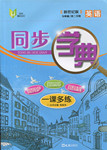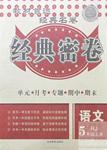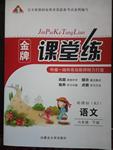题目内容
Are you carrying too much on your back at school? You’re not alone. Back experts(专家) in the USA are worried about that young students are having back and neck problems because they are carrying too much in their backpacks .
“It hurts my back when I run,” said Ebelin Reyes, a student in Virginia. “It’s hard to get up the stairs with my backpack because it’s too heavy.” Students have to carry heavy backpacks on their backs for a whole week’s study. Ebelin is one of them. They have regular(固定的)backpacks with two straps(带子) to carry them, but a number of students with heavy loads(负担) have switched to rolling backpacks. The backpacks have wheels and can roll on the ground. Shirley Park’s backpack weighs 10 kilos, and she said, “I’ll change to a rolling backpack because I am starting to have back pain.”
How much is too much? Experts say that students should carry no more than 10% to 15% of their own body weight. A few students have had a good idea to lighten(减轻) the load: less homework.
Doctor’s suggestions:
Lighten the load. Take home only the books the students need that day.
(2) Wide straps are better. They can send out weight over your shoulders (肩)and be sure to wear backpacks with two straps.
(3) The heaviest things should be packed closest to the back.
(4) Bend(弯曲) both knees when you pick up the pack, don’t just bend over the waist(腰)
- 1.
The main idea of the passage is about _______
- A.the problems made by rolling backpacks
- B.the advantage of backpacks
- C.the best backpacks for students
- D.how to lighten students’ backpacks
- A.
- 2.
From what Ebelin Reyes and Shirley Park said, we know______
- A.students like to carry heavy backpacks
- B.students have to do a lot of homework
- C.backpacks with wheels are bad for students
- D.students have no time to play because of heavy backpacks
- A.
- 3.
The underlined word “switch to” means______
- A.use for
- B.turn to
- C.catch up
- D.begin to use
- A.
- 4.
According to the experts, it’s better for a student of 40 kilos to carry a backpack of ____ at most
- A.10 kilos
- B.8 kilos
- C.6 kilos
- D.7 kilos
- A.
- 5.
If students follow the doctor’s suggestions, they______
- A.may do less homework
- B.may feel their backpacks are lighter
- C.can learn how to enjoy themselves
- D.will know why to wear heavy backpacks
- A.
试题分析:这篇短文主要描述了中美学生的书包都很重,这会对学生的身体造成不良影响。专家对此提出了建议,并号召老师和家长采取适当的措施。
1.根据短文描述,可知本文主要讲述的是如何减轻学生们的背包的问题。故选D。
2.根据短文第二段描述,可知他们背包过重主要是因为作业太多。故选B。
3.联系上下文描述,可知此处指的是许多学生开始使用滚动背包。故选D。
4.根据Experts say that students should carry no more than 10% to 15% of their own body weight.描述,计算可知选C。
5.根据Lighten the load.描述及医生的建议,可知主要目的是减轻载重。故选B,可能感到他们的背包更轻了。
考点:介绍中美学生书包过重的说明文
点评:本文中长句较多,一时很难读懂句子含义,注意多读几遍,不要强求非得理解一词一句的含义,能把握文章大意就行。然后带着问题阅读短文,一般就能顺利找出答题依据。对于有关数字的问题,要认真分析,并进行必要的计算

 同步学典一课多练系列答案
同步学典一课多练系列答案 经典密卷系列答案
经典密卷系列答案 金牌课堂练系列答案
金牌课堂练系列答案My name is Eu and I want to be your pen pal. I’m eleven years old. I’m a boy but that doesn’t mean(意味)I can’t have girl friends. I like dancing. Oh, I am in Mexico. All the people here like dancing. Please answer me. Thank you.
August 2006 From: blazin@aol.com
I’m Erica. I’m seventeen. I’m from Canada. Do you want me to be your pen pal? Who are you? What age? I like movies and books.
September 2006 From: snickers@yahoo.com
I’m Heather. I’m nineteen and I live in New York in the USA. I like art and music. I have three dogs. I want to write to anyone with the same(相同的) likes. Thanks!
December 2006 From: bmay@mb.sympatico.ca
Hi! I’m Steven. I’m a boy of thirteen years old. I am in Grade 7. I like drawing and playing computer games. I want to find a pen pal from Australia or China. I’m from Canada.
| Name | Country | Likes |
| Eu | Mexico | 26_____ |
| Erica | 27______ | 28_____ |
| Heather | 29______ | Art, music and dogs |
| Steven | Canada | 30_______ |
August 2006 From: eu@hotmail.com
My name is Eu and I want to be your pen pal. I’m eleven years old. I’m a boy but that doesn’t mean(意味)I can’t have girl friends. I like dancing. Oh, I am in Mexico. All the people here like dancing. Please answer me. Thank you.
August 2006 From: blazin@aol.com
I’m Erica. I’m seventeen. I’m from Canada. Do you want me to be your pen pal? Who are you? What age? I like movies and books.
September 2006 From: snickers@yahoo.com
I’m Heather. I’m nineteen and I live in New York in the USA. I like art and music. I have three dogs. I want to write to anyone with the same(相同的) likes. Thanks!
December 2006 From: bmay@mb.sympatico.ca
Hi! I’m Steven. I’m a boy of thirteen years old. I am in Grade 7. I like drawing and playing computer games. I want to find a pen pal from Australia or China. I’m from Canada.
| Name | Country | Likes |
| Eu | Mexico | 26_____ |
| Erica | 27______ | 28_____ |
| Heather | 29______ | Art, music and dogs |
| Steven | Canada | 30_______ |
| We Want You! WANTED: Do you want a busy and exciting job? Are you good at talking with people? Do you like to write stories? Do you want to work for a TV station? If yours answer is “Yes”, then we want you as a(an) Please call John at 4223-6577. |
| Victoria Middle School Report Student: Jenny Jones | ||
| Subject | Grade | Comments |
| Maths | B | Good work all year. |
| Chinese | A- | Does well in thissubject. |
| English | A+ | Very interested and very good job! |
| Science | C | A little weak in this subject. |
| Computer | D | Not really interested and need improvement. |
| Sports | A | Captain of girls soccer team and on basketball team. |
| Total Grade | B | |
- 1.
They are looking for _______.
- A.a teacher
- B.a reporter
- C.an actor
- D.a driver
- A.
- 2.
Where can we read the first text?
- A.In a picture.
- B.In a dictionary.
- C.In a newspaper.
- D.In a storybook.
- A.
- 3.
Whose school report is it?
- A.Victoria’s.
- B.Jenny Jones’.
- C.Mrs. Brown’s .
- D.We don’t know.
- A.
- 4.
Which subject of the following was Jenny best at?
- A.Maths.
- B.Chinese.
- C.English.
- D.Science.
- A.
- 5.
How did Jenny do in sports?
- A.Very well.
- B.With problems
- C.A little weak.
- D.Not interested at all.
- A.
从下面的方框中选择适当的选项补全对话。(有两项是多余的)
W: Hello, Tom. Are you free tomorrow?
| A. She’s got long dark hair and she wears glasses. B. Does she carry anything easy to recognize? C. Can you help me to meet her at the airport? D. What’s the flight number? E. How does Kate think of China? F. At half past three tomorrow afternoon. G. Why does your sister come to China? |
M: Yes. Why?
W: My sister will come from England tomorrow, but I’m busy with my school work.
________66________
M: Sure. What’s her name?
W: Kate.
M: Oh, wait a moment. I’ll write it down. K-A-T-E, Kate. OK. What time will she arrive?
W: ________67________
M: ________68________
W: CA 715.
M: What does she look like?
W: She’s tall and thin. ________69________
M: How old is she?
W: She is 26.
M: ________70________
W: Yes. She carries a red handbag.
M: OK. I think I can find her.
66. 67. 68. 69. 70.


